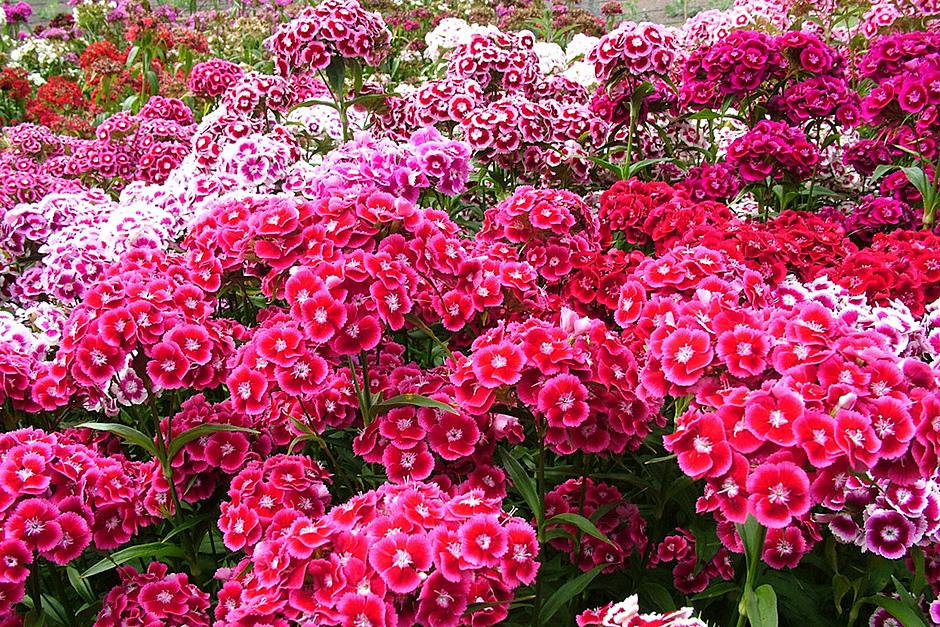Sweet William Plant is just like its name unique, beautiful and attractive. It is considered a two-season or perennial plant. In addition to this, it becomes famous worldwide as an ornamental garden plant. The average height of the sweet William plant is 13-93 cm high. Moreover, Each flower contains approximately 30/ petals at the top of the stem in a form of a cluster. Each flower of this plant is 2-3 cm long. This plant is ideal for various places such as containers, cottage gardens and perennial beds. Interestingly these flowers grow in vibrant shades such as the combination of purple, red, pink, and white variegated sequences.
Origin: Dianthus barbatus was first time discovered in South Europe and some regions of Asia.
Scientific Name:
This flowering is scientifically known as Dianthus barbatus.
Common Names: There are some other beautiful names for this plant such as pinks, Bearded pink and Sweet William.
Family: The family of Bearded pink I is Caryophyllaceae
Plant Kind: This plant is generally considered a perennial herbaceous species.
Size: 1-2 feet tall and 0.5-1 feet in width.
Light Exposure: It can tolerate partial shades as well as full sunlight.
Soil PH: The PH of the soil should range from Acidic to Neutral or Alkaline.
Growing Time: The ideal time to grow this flowering plant is the end of the spring and the beginning of the summer.
Hardiness Zone: Its hardiness zone range from 4-9.
Toxicity: Generally these flowers are toxic for dogs and cats.
Wildlife Value: Sweet William is such a beautiful flowering plant. And due to which it highly attracts butterflies, bees and birds towards itself. This plant extracts nectar because of which birds are fond of it.
Sweet William Care:
This plant is very simple to grow which it gets proper and filtered sunlight. It needs good soil. In addition to this, Sweet William produces seeds every year when it gets desired conditions for development. So interestingly you can have these beautiful flowers every summer.
Light: If you are not in the Southern regions where the climate is very hot, Sweet William loves to grow in full sunlight. It can grow in partial shades. But keep it in mind that if this plant remains in too many shades it can get leggy or floppy. In the hot climate regions, some shades are helpful in the afternoon for this plant for blooming time.
Soil: This attractive plant can manage to grow in any kind of soil such as loamy, sandy etc. But not wet and heavy condition soils. The ideal soil for the growth of any plant and sweet William also is wells rained, loamy and fertilized soil. This plant can grow even in any type of PH level soil. But it grows perfectly in soil that contains alkaline.
Water: It is very important to facilitate this plant with proper water when it is in its growing process.
Fertilizer: For the fertilization of sweet William, all-purpose fertilizer is best. So you can fertilize this plant after every few months, especially at its development time.
Common Pests & Plant Diseases:
Sweet William also faces various pest diseases and problems such as crown rot and rust. These problems occur when the soil is drained poorly. Snails and Slugs also attack this plant.
Edible Uses: This flowering plant is non-toxic for humans and is edible. People use the parts of this plant for making various dishes such as salads, cakes, signature dishes and desserts. The petals of this plant are used to make ice creams, fruit salads, sauces and stir-fries.
Medical Uses: Sweet William plant Aldo has a wide range of medical benefits such as
- It helps to cure digestive issues.
- This plant is also best for various other diseases such as liver problems, swelling, Cold, Bronchitis and Scrofula.
- Sweet William is also best for the treatment of cold and fever.
CONCLUSION:This plant is one of the most popular plants for the ornamental gardens of various regions of the world. It is best to decorate plats in beds and pots, containers etc. Due to the tasty nectar of this plant, it attracts butterflies, hummingbirds and bees. So overall it is an ideal plant for any type of garden.
Alternative:

